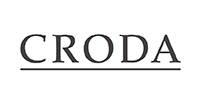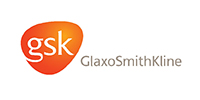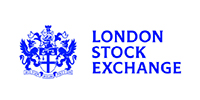
5 shares to watch in 2025
Our expert share research team’s top investment picks for 2025 and beyond.
Important notes
This page isn’t personal advice. If you’re not sure whether an investment is right for you please seek advice. If you choose to invest the value of your investment will rise and fall, so you could get back less than you put in.
As we approach 2025 global markets stand at a crossroads, shaped by a mix of economic recovery, innovation, and geopolitical shifts. Investors are navigating a landscape influenced by falling interest rates, evolving consumer behaviour, and rapid technological advancements. The year ahead promises significant opportunities, but also challenges, as companies adapt and position themselves for long-term growth.
From major political changes to the relentless march of AI across industries, 2025 could mark a pivotal year for companies looking to get to the front of the pack. Meanwhile, steady growth stories and companies with resilient business models will likely play a critical role in portfolios as global uncertainty persists. Against this backdrop, here are five shares that stand out as ones to watch in the year ahead.
Investing in an individual company isn’t right for everyone because if that company fails, you could lose your whole investment. If you cannot afford this, investing in a single company might not be right for you. You should make sure you understand the companies you’re investing in and their specific risks. You should also make sure any shares you own are part of a diversified portfolio.
This isn’t personal advice or a recommendation to invest and remember all investments and any income they produce can fall as well as rise in value – you could get back less than you invest. Yields are not a reliable indicator of future income. Past performance is not a guide to future returns. If you’re not sure an investment is right for you, please seek advice.
Information correct as at 22 November 2024, unless otherwise stated.
Keep an eye on our top five shares to watch in 2025
Would you like to see how these shares get on in the year ahead?
Watchlists let you track investments without spending real money. Set one up to follow the performance of our shares to watch, create your own watchlist or copy the details of real holdings.
To follow these shares, use the ‘add to watchlist’ button below the name of each share. Then log in to your account to keep track online or with the HL mobile app.
Airbus

Long runway ahead
Airbus builds aircraft using thousands of parts from companies worldwide. There are only two dominant players in this space, and we think Airbus has prime position after its rival’s recent strike action and high-profile tragic incidents which have caused long-lasting reputational and operational damage.
Airlines also need to upgrade fleets after years of COVID-19-related underinvestment. As a result, the order backlog swelled to 8,749 aircraft at the end of the third quarter.
Backlog of commercial aircraft orders
Source: Airbus Q3 reports, November 2024
That’s more than 11 times the number of planes Airbus expects to deliver this year (around 770), giving the group great revenue visibility. High barriers to entry keep outside competition at bay.
However, some suppliers have struggled to keep up with demand, slowing production volumes. This year’s delivery guidance remains on track, but it could mean a slow start to the new year. Management has put plans in motion to resolve these issues, but it could be 2026 before production ramps up materially.
Then there’s the Space division. The new management team conducted an in-depth review and had to book significant charges due to mispricing previous contracts. We can’t rule out a further, much smaller charge, but this should close the door on a painful chapter for the company.
As a result, full-year operating profits are expected to fall by 7% this year to €5.4bn, before rebounding around 37% in 2025. The balance sheet is in good shape, with net cash forecast to eclipse €10bn this year. If this happens, management hinted at increased shareholder returns, but there are no guarantees.
The valuation is broadly in line with the long-run average, which we think underplays the group’s improved market position. With structural winds blowing in its favour, there could be a long runway of growth ahead if Airbus can iron out supply chain issues. Of course, this isn’t a simple task, so expect some turbulence along the way.
Croda

Primed for recovery
Croda is a developer and supplier of ingredients for industrial applications, the life sciences, and consumer care brands in areas such as homecare and beauty products. It’s a relatively small player in the chemicals sector, so we support the increasing focus on innovative products in specialist niches.
Croda played a key part in the race to find a COVID-19 vaccine. Its technical and logistical prowess then earned it a lucrative contract once the Pfizer-BioNTech vaccine received regulatory approval. However, COVID sales proved to be more of a windfall than a recurring event, which has made comparatives difficult.
That’s coincided with several other challenges in recent years, including weak demand in home and personal care products and crop care, as manufacturers ran down emergency stockpiles built up during the pandemic. These issues drove a further sharp fall in profit in the first half of 2024.
Croda financial performance (£bn)
Source: Refinitiv Eikon, November 2024 (* are estimated)
Recent demand reflects some promising signs of recovery in its end markets. Should that continue, there’s scope for an improvement in profitability. It’s a little too early to say it’s out of the woods yet, but we’re hopeful of further improvement in 2025. Meanwhile, finances look strong enough to weather further ups and downs whilst supporting a 3.3% prospective forward dividend yield and potential acquisitions. However, there can be no guarantee of either.
This could be a turning point for the company, as Croda’s product portfolio leans into several long-term megatrends, including growing consumer preferences for sustainable ingredients. It also serves some exciting growth areas of medical research. In crop care its innovations are well placed to be able to respond to regulatory and demographic drivers to increase food production in an environmentally responsible manner if and when opportunities arise.
It’s no surprise investor confidence has dropped during the difficult years that followed Croda’s COVID success. But under the bonnet, management has been working hard to position the business for growth, which looks closer than it has for some time.
GSK

Quality and value
Pharmaceutical company GSK is becoming a dependable name for raising and meeting guidance. That may not continue forever, but even after coming up against some headwinds in the vaccines franchise, it’s on track to meet its twice upgraded guidance for 2024.
The financial progress is underpinned by excellence in research and development that’s seen 11 positive late stage clinical updates from recent results, and is expected to yield five major product approvals next year. Beyond vaccines, the group also has a strong presence in HIV treatments, which make up about 20% of total revenues. Its newer treatments are a key part of GSK's future, as generic competitors eat away at pricing power for some of the group's legacy treatments, and sales growth in the category remains healthy. The smaller oncology division is growing very rapidly, with promising growth drivers in both existing treatments and the development pipeline.
However, the pharmaceutical industry comes with high exposure to changes in the political landscape as well as the inherent risk of failed clinical trials so investors should be prepared for disappointments.
GSK clinical pipeline
Source: GSK third quarter investor presentation, October 2024
More recently, the valuation’s been held back by litigation relating to the heartburn drug Zantac. We believe developments on that front have materially reduced a key risk. But that’s not been enough to offset investor concerns around the US performance of two key products, Arexvy and Shingrix.
Given the impact on next year’s forecasts have been fairly limited, the continued pressure on the valuation looks to be overdone, which could offer an attractive entry point to an impressive business. And on the plus side, valuation weakness has helped push the forward prospective dividend yield to 4.9%. As ever, no returns are guaranteed.
London Stock Exchange Group

Bridging the gap
The London Stock Exchange Group (LSEG) is more than just a stock exchange. It’s a global leader in financial data and technology.
After buying Refinitiv, a major data and analytics business, LSEG now earns most of its revenue from providing tools and services that financial professionals rely on daily. The company also benefits from its diversified operations. In addition to data and analytics, LSEG generates revenue from services like clearing and settlement, which help ensure that financial transactions are completed smoothly. This variety of income streams makes LSEG’s business more resilient during market ups and downs.
What’s exciting about LSEG is its potential for growth. The company has been working hard to boost profitability, with cash flow and efficiency both expected to improve over the next few years. Analysts predict a noticeable increase in LSEG’s return on invested capital (ROIC), a measure of how well a company uses its capital to generate profit. We see this as a key area for improvement that could help bridge the valuation gap between LSEG and some of its US peers, if it can deliver.
LSEG Return on Investment Capital (ROIC)
Source: Redburn Atlantic accessed November 2024 (* are estimated)
Looking ahead, LSEG is expected to keep growing as it integrates new technology and expands its offerings. For example, its focus on cloud-based solutions and automation is helping financial institutions save time and money.
As a major player in global finance, LSEG faces some challenges. The financial industry is heavily regulated, so changes in rules could impact its business. The company also relies on cutting-edge technology, which requires constant investment to stay ahead.
The electronification of trading, embedding tech into capital markets, and growth in demand for data and tools to analyse it are all areas that LSEG looks well-placed to benefit from. But some of that has already been priced in, and if it wants to continue bridging the valuation gap to US peers, it needs to deliver, and there are no guarantees.
NVIDIA

Optimistic of more growth to come
NVIDIA’s dominance in accelerated computing and artificial intelligence (AI) propelled it to become the most valuable company in the world in June. Investors can rightfully ask where does it go from here?
It’s forecast to deliver a second consecutive year of treble digit sales growth with consensus revenue sitting at a staggering $129bn. This reinforces our view that NVIDIA is a once in a generation company. A better than expected launch for the new Blackwell super chip sets the tone for further near-term momentum.
Longer-term considerations should be the scale of the opportunity and NVIDIA’s ability to retain its leadership. NVIDIA is confident that the upgrade cycle of outdated data centres represents a $1 trillion opportunity. We think new cloud deployments could generate a similar sized prize, and the emergence of dedicated AI infrastructure adds further blue sky potential.
These growth drivers are reflected in strong demand seen beyond the mega-cap cloud providers. The Microsofts and Amazons of this world are showing no let up in their spend on computing power, but reducing reliance on a handful of clients is no bad thing.
NVIDIA also sees an unquantified opportunity for dedicated AI infrastructure. For that to materialise, AI needs to deliver strong financial returns for organisations that integrate it into their products and processes. So far, we’re impressed by the impact AI is having on everything from content creation and customer services to computer programming.
With soaring demand, supply constraints are starting to emerge. Key manufacturing partners are planning to add capacity to service this extra business but blockages in the supply chain remain a risk to be wary of. Such a mouthwatering addressable market is also bound to attract competition. Existing and emerging rivals are fighting hard to catch up. But we think NVIDIA’s technological supremacy and growing financial strength make it very difficult to displace.
NVIDIA free cash flow ($bn)
Source: Refinitiv Eikon, November 2024 (* are estimated)
Based on the market opportunity and track record of execution, the valuation doesn’t look too demanding. But given the exaggerated impact the company’s performance has on investor returns worldwide, there is added pressure to keep delivering.
Unless otherwise stated estimates, including prospective yields, are a consensus of analyst forecasts provided by Refinitiv. These estimates are not a reliable indicator of future performance. Yields are variable and not guaranteed. Investments rise and fall in value so investors could make a loss.
This article is not advice or a recommendation to buy, sell or hold any investment. No view is given on the present or future value or price of any investment, and investors should form their own view on any proposed investment. This article has not been prepared in accordance with legal requirements designed to promote the independence of investment research and is considered a marketing communication. Non-independent research is not subject to FCA rules prohibiting dealing ahead of research, however HL has put controls in place (including dealing restrictions, physical and information barriers) to manage potential conflicts of interest presented by such dealing. Please see our full non-independent research disclosure for more information.
Choose an account to invest in shares
Tax rules and ISA and SIPP legislation can change and any benefits will depend on your circumstances. Money in a SIPP can normally be accessed from 55 (57 from 2028), with up to 25% tax free and the rest taxable. If you’re not sure what’s right for you, seek advice.
Stocks and Shares ISA
- Invest free from UK income and capital gains tax
- Start investing in funds from £100 lump sum, or £25 a month
- Invest up to £20,000 this tax year
Fund and Share Account
- Start investing in funds from £100 lump sum, or £25 a month
- No investment limits but tax charges could apply
Self-Invested Personal Pension (SIPP)
- Get 20-47% tax relief on what you put in
- Start investing in funds from £100 lump sum, or £25 a month
- Invest up to £60,000 this tax year
In all three accounts you can hold funds alongside other investments like shares, ETFs and investment trusts. See details of HL charges.
Important notes
This page isn’t personal advice. If you’re not sure whether an investment is right for you please seek advice. If you choose to invest the value of your investment will rise and fall, so you could get back less than you put in.



